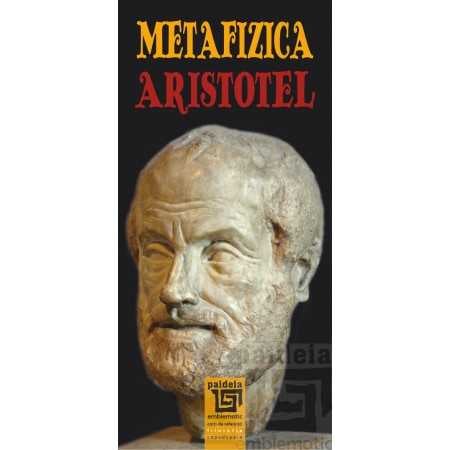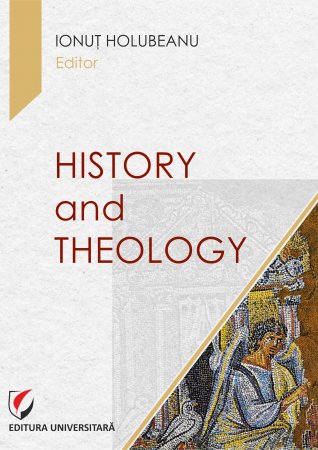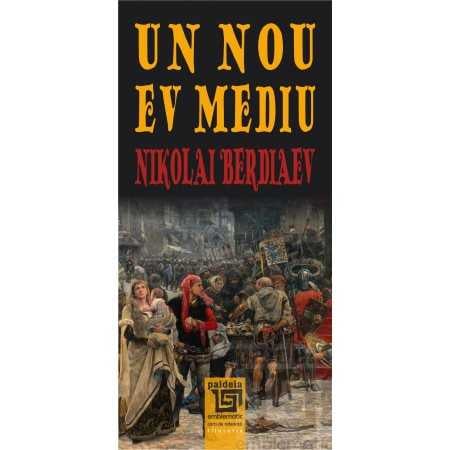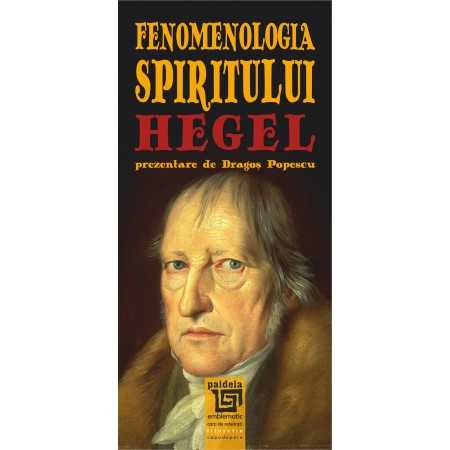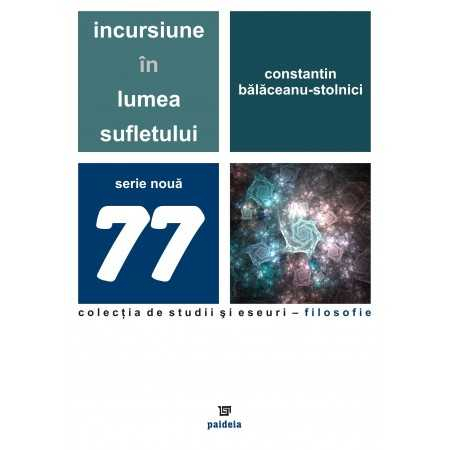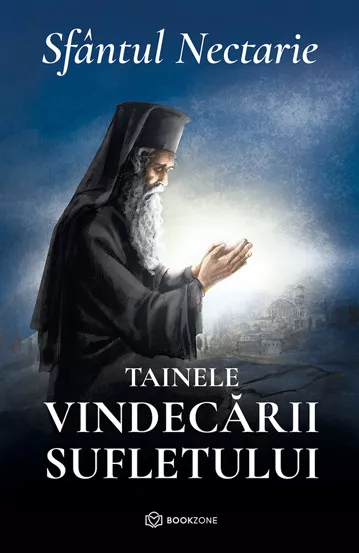Manuscript proposals: [email protected] / 0745 204 115 //// Tracking orders Individuals / Sales: 0745 200 357 / Orders Legal entities: 0721 722 783
Publisher: Editura Universitară
Author: Stefan Leoca
Edition: I
Pages: 246
Publisher year: 2022
ISBN: 978-606-28-1569-1
DOI: https://doi.org/10.5682/9786062815691
Product Code:
9786062815691
Do you need help?
0745 200 357
- Description
- Download (1)
- Authors
- More details
- Content
- Reviews (0)
In his introductory speech from the book "Church Teaching" (printed in 1710, by Gheorghe Radovici) addressed to "pious priests", Metropolitan Antim Ivireanul stated that every bishop of the Church needs the help of priests for "the governance of the Church and the salvation of the souls" of the faithful . Priests - in the opinion of the hierarch Antin Ivireanul - have the duty "unceasingly, both in word and deed" to work day and night "together with the pastorate" for the salvation of the "speaking flock", received in God's care.
With these words, the head of the Church in Ungrovlahia actually affirmed the canonical principle according to which not only bishops, but also presbyters and deacons, as members of the priesthood by divine right, have the power and duty to actively participate in the exercise of church power, either she teaching, sanctifying or leading.
Author
With these words, the head of the Church in Ungrovlahia actually affirmed the canonical principle according to which not only bishops, but also presbyters and deacons, as members of the priesthood by divine right, have the power and duty to actively participate in the exercise of church power, either she teaching, sanctifying or leading.
Author
-
The Holy Hierarch Martyr Antim Ivireanu and his educational activity
Download
STEFAN LEOCA, Pr.
In specialized literature today there are countless studies and even real treatises that address in detail - both from the theological point of view and from the literary linguistic point of view - the educational activity of the hierarch Antim Ivireanul. However, we still do not have studies - except sporadically and on certain isolated aspects of his life - that present Saint Antim the Ivirean as a connoisseur and practitioner of the canonical appointments and norms provided by the holy canons, although this is evident with abundance both from his teaching activity, as well as from the sanctifying and leading one. This book comes to fill this gap in the specialized literature.
The work makes an important contribution not only in terms of clarifying certain confusions and ambiguities that appeared in specialized literature, mostly caused by ignorance or ignorance of the sources of canonical, orthodox legislation, but also in terms of the educational activity exercised by the hierarch Antim Ivireanul in the life of the Church precisely because of the importance it gave to the canonical and nomocanonical legislation regarding the pastoral-canonical activity of a hierarch of the Orthodox Church. Moreover, the work presents the hierarch Antim the Ivirean as a connoisseur and rigorous practitioner of the canonical appointments and norms, stipulated both by the canonical legislation of the first Christian millennium, and by the nomocanonical legislation (Pravile) of the Country, which the Georgian Antim knew - and applied it taking into account the "Law of the Land". And this entitles us to say that precisely because of his preparation in the field of canonical and nomocanonical legislation, the Georgian-born typographer Antim, who became metropolitan of the Romanian Country during the reign of Constantin Brancoveanu, managed to be a true confessor and defender of Orthodoxy in the Countries Romanians and from other parts of the Orthodox Christian world.
In the elaboration of this scientific research work, I used the latest discoveries, interpretations and approaches of the Antimian springs, which appeared especially in the context of the 300th anniversary of the martyrdom of Metropolitan Antim Ivireanul, which I reported both to the text of the canonical, orthodox legislation from the first millennium and of the (Byzantine) Rules printed in the Roman Countries in the 17th century, as well as to the text of the commentaries of the classical Byzantine canonists (Zonara, Balsamon and Artisten) on the holy canons, but also other canonists of the Eastern Church.
In this way, I tried to make a contribution both in terms of clarifying certain confusions and ambiguities that appeared in specialized literature, mostly caused by ignorance or ignorance of the sources of canonical, orthodox legislation, as well as in terms of the educational activity exercised by the hierarch Antim Ivireanu in the life of the Church precisely because of the importance he gave to the canonical and nomocanonical legislation regarding the pastoral-canonical activity of a hierarch of the Orthodox Church.
By mentioning the means by which Metropolitan Antim Ivireanul managed to defend the interests of the Church in the Romanian Country against the abuses coming from the patriarchate of Jerusalem or Constantinople, the means by which he contributed to the defense of the Church's teaching of faith against the attacks from the Catholic missionaries and Protestants not only within the boundaries of his diocese, but also outside them, of the means by which he supported the resistance of the Romanians from Transylvania against the Uniates and Catholicists, of the means by which he raised the level of theological training of the clergy of divine institution within the diocese of his, of the means by which he transmitted to the ruler, to the nobles of the royal court, but also to the simple people the teaching of the Church's faith. of course, we wanted to see not only the teaching activity, but also the pastoral-canonical one for the clergy of divine institution (bishops, priests and deacons) of our days regarding the exercise of the teaching power (activity).
The work also contains a study entitled "The canonical doctrine of the Eastern Church regarding the teaching power and its exercise", which constitutes the second chapter of the book.
The work makes an important contribution not only in terms of clarifying certain confusions and ambiguities that appeared in specialized literature, mostly caused by ignorance or ignorance of the sources of canonical, orthodox legislation, but also in terms of the educational activity exercised by the hierarch Antim Ivireanul in the life of the Church precisely because of the importance it gave to the canonical and nomocanonical legislation regarding the pastoral-canonical activity of a hierarch of the Orthodox Church. Moreover, the work presents the hierarch Antim the Ivirean as a connoisseur and rigorous practitioner of the canonical appointments and norms, stipulated both by the canonical legislation of the first Christian millennium, and by the nomocanonical legislation (Pravile) of the Country, which the Georgian Antim knew - and applied it taking into account the "Law of the Land". And this entitles us to say that precisely because of his preparation in the field of canonical and nomocanonical legislation, the Georgian-born typographer Antim, who became metropolitan of the Romanian Country during the reign of Constantin Brancoveanu, managed to be a true confessor and defender of Orthodoxy in the Countries Romanians and from other parts of the Orthodox Christian world.
In the elaboration of this scientific research work, I used the latest discoveries, interpretations and approaches of the Antimian springs, which appeared especially in the context of the 300th anniversary of the martyrdom of Metropolitan Antim Ivireanul, which I reported both to the text of the canonical, orthodox legislation from the first millennium and of the (Byzantine) Rules printed in the Roman Countries in the 17th century, as well as to the text of the commentaries of the classical Byzantine canonists (Zonara, Balsamon and Artisten) on the holy canons, but also other canonists of the Eastern Church.
In this way, I tried to make a contribution both in terms of clarifying certain confusions and ambiguities that appeared in specialized literature, mostly caused by ignorance or ignorance of the sources of canonical, orthodox legislation, as well as in terms of the educational activity exercised by the hierarch Antim Ivireanu in the life of the Church precisely because of the importance he gave to the canonical and nomocanonical legislation regarding the pastoral-canonical activity of a hierarch of the Orthodox Church.
By mentioning the means by which Metropolitan Antim Ivireanul managed to defend the interests of the Church in the Romanian Country against the abuses coming from the patriarchate of Jerusalem or Constantinople, the means by which he contributed to the defense of the Church's teaching of faith against the attacks from the Catholic missionaries and Protestants not only within the boundaries of his diocese, but also outside them, of the means by which he supported the resistance of the Romanians from Transylvania against the Uniates and Catholicists, of the means by which he raised the level of theological training of the clergy of divine institution within the diocese of his, of the means by which he transmitted to the ruler, to the nobles of the royal court, but also to the simple people the teaching of the Church's faith. of course, we wanted to see not only the teaching activity, but also the pastoral-canonical one for the clergy of divine institution (bishops, priests and deacons) of our days regarding the exercise of the teaching power (activity).
The work also contains a study entitled "The canonical doctrine of the Eastern Church regarding the teaching power and its exercise", which constitutes the second chapter of the book.
INTRODUCTION / 9
I. THE LIFE AND ACTIVITY OF THE ANCIENT IVIREAN SAINT / 11
A. Date and place of birth / 11
B. About the first part of the life of Antim Ivireanul and the circumstances in which he left his birthplace / 13
C. Where and when did Antim the Ivirean receive the monastic robe and priestly ordination? / 15
D. The arrival of Antim Ivireanul in the Roman Countries / 19
E. Antim Ivirianul, Metropolitan of Ungrovlahie / 26
F. Martyrdom of Saint Antim Ivirean / 42
G. Canonization of the Holy Hierarch Martyr Antim Ivirean / 48
II. THE CANONICAL DOCTRINE OF THE EASTERN CHURCH CONCERNING TEACHING POWER AND ITS EXERCISE / 51
A. Church power and its exercise / 51
1. The juridical-canonical notion of church power / 51
2. Canonical grounds regarding the exercise of church power / 52
B. Teaching power and its exercise / 57
1. Appointments and canonical norms regarding the exercise of teaching power in the Apostolic Collections / 59
2. The right and obligation of clerics of divine institution to preach the right faith in the light of the holy canons / 65
III. THE EXERCISE OF TEACHING POWER BY THE ANCIENT IVIREAN HIERARCH THROUGH THE SERMON / 95
A. The sources of anti-human preaching / 102
B. The teachings transmitted by Metropolitan Antim Ivireanul through his sermons / 106
IV. THE EXERCISE OF THE TEACHING POWER BY THE ANCIENT HIERARCH IVIRENU THROUGH PRINTS, WRITINGS AND CORRESPONDENCE / 121
A. The exercise of teaching power by the hierarch Antim Ivireanul through prints and writings / 121
B. The exercise of teaching power by the hierarch Antim Ivireanul by correspondence / 173
CONCLUSIONS / 197
BIBLIOGRAPHY / 218
I. THE LIFE AND ACTIVITY OF THE ANCIENT IVIREAN SAINT / 11
A. Date and place of birth / 11
B. About the first part of the life of Antim Ivireanul and the circumstances in which he left his birthplace / 13
C. Where and when did Antim the Ivirean receive the monastic robe and priestly ordination? / 15
D. The arrival of Antim Ivireanul in the Roman Countries / 19
E. Antim Ivirianul, Metropolitan of Ungrovlahie / 26
F. Martyrdom of Saint Antim Ivirean / 42
G. Canonization of the Holy Hierarch Martyr Antim Ivirean / 48
II. THE CANONICAL DOCTRINE OF THE EASTERN CHURCH CONCERNING TEACHING POWER AND ITS EXERCISE / 51
A. Church power and its exercise / 51
1. The juridical-canonical notion of church power / 51
2. Canonical grounds regarding the exercise of church power / 52
B. Teaching power and its exercise / 57
1. Appointments and canonical norms regarding the exercise of teaching power in the Apostolic Collections / 59
2. The right and obligation of clerics of divine institution to preach the right faith in the light of the holy canons / 65
III. THE EXERCISE OF TEACHING POWER BY THE ANCIENT IVIREAN HIERARCH THROUGH THE SERMON / 95
A. The sources of anti-human preaching / 102
B. The teachings transmitted by Metropolitan Antim Ivireanul through his sermons / 106
IV. THE EXERCISE OF THE TEACHING POWER BY THE ANCIENT HIERARCH IVIRENU THROUGH PRINTS, WRITINGS AND CORRESPONDENCE / 121
A. The exercise of teaching power by the hierarch Antim Ivireanul through prints and writings / 121
B. The exercise of teaching power by the hierarch Antim Ivireanul by correspondence / 173
CONCLUSIONS / 197
BIBLIOGRAPHY / 218
If you want to express your opinion about this product you can add a review.
write a review

6359.png)
![The Holy Hierarch Martyr Antim Ivireanu and his educational activity - Stefan Leoca [1] The Holy Hierarch Martyr Antim Ivireanu and his educational activity - Stefan Leoca [1]](https://gomagcdn.ro/domains/editurauniversitara.ro/files/product/large/sfantul-ierarh-martir-antim-ivireanul-si-activitatea-sa-invatatoreasca-432457.jpg)
